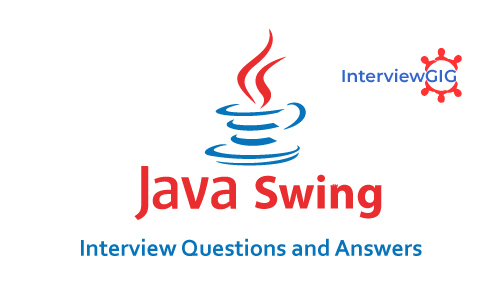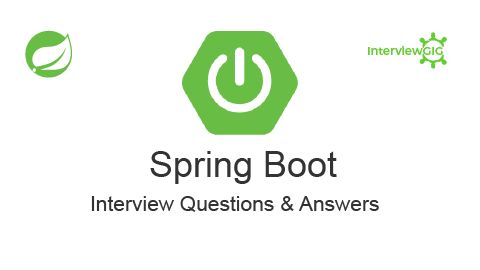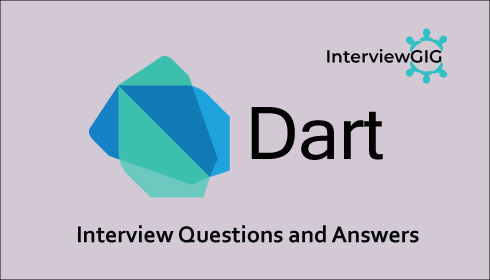What is C++?
C++ is an opensource, general purpose Multi paradigm, high level programming language. It supports both Procedural and object oriented programming. C++ is a superset of C language. It is one of the most popular programming language for creating large scale applications.
What are the differences between C and C++?
C programming language:
- C is a subset of C++(some cases only)
- C is a procedural programming language.
- C doesn’t support function and operator overloading
- C doesn’t support reference variables
- C doesn’t support exception handling
- C doesn’t have namespace feature
- C doesn’t support virtual and friend function
C++ Programming language:
- C++ is superset of C.
- C++ is Procedural and Object oriented programming language
- C++ supports function and operator overloading
- C++ supports reference variables
- C++ supports exception handling
- C++ uses NAMESPACE
- C++ supports virtual and friend function
What is a class?
A Class is a user defined data-type which has data members and member functions. A class is defined in C++ using keyword class followed by the name of class.
What is object?
An Object is an instance of a Class. When class is defined, only the specification for the object is defined; no memory or storage is allocated.
What is friend class?
Class members can gain accessibility over other class member by placing class declaration prefixed with the keyword “friend” in the destination class.”
Can you explain storage classes?
Storage class are used to specify the visibility/scope and life time of symbols(functions and variables). That means, storage classes specify where all a variable or function can be accessed and till what time those variables will be available during the execution of program.
What is Token?
A c++ program consists of various tokens and a token is either a keyword, an identifier, a string literal, or a symbol, a constant
What is Recursion?
A function that calls itself is known as recursive function, this is also known as recursion.
What is function overriding?
Function overriding is a way to implement polymorphism. Function overriding is a language feature that allows a subclass or child class to provide a specific implementation of a method that is already provided by one of its super classes or parent classes.
What is Virtual function?
A virtual function is a member function in base class that you expect to redefine in derived classes.
What is Volatile Variable?
Variables prefixed with the keyword volatile acts as a data type qualifier. The volatile keyword attempts to alter the default way in which the variables are stored and the way the compiler handles the variables.
What are Pointers?
Pointers are special type of variables that are used to store the memory address of the other variables. Pointers are declared normallt as other variables with difference of * that is present in front of the pointer identifier.
What is Null Pointer?
NULL pointer is not the uninitialized pointer that can point anywhere, the NULL pointers are the one which do not point anywhere that is which do not point to any object or any function.
What is enumeration?
An enumeration is a user-defined data type that consists of integral constants. To define an enumeration, keyword enum is used.
What are Structures and Unions?
While handling real world problems we come across situations when we want to use different data type as one, C allows the user to define it own data type known as structures and unions. Structures and unions gathers together different atoms of information are that comprise a given entity.
What is inheritance?
Inheritance provides reusability. Reusability means that one can use the functionalities of the existing class. It eliminates the redundancy of code. Inheritance is a technique of deriving a new class from the old class. The old class is known as the base class, and the new class is known as derived class.
What is Encapsulation?
Encapsulation is a process of combining data members and functions in a single unit called class.
What is Abstraction?
Abstraction is a one of the technique of showing only essential details without representing the implementation details. If the members are defined with a public keyword, then the members are accessible outside also. If the members are defined with a private keyword, then the members are not accessible by the outside methods.
What is Data binding?
Data binding is a process of binding the application UI and business logic. Any change made in the business logic will reflect directly to the application UI.
What is Polymorphism?
Polymorphism means multiple forms. It means having more than one function with the same name but with different functionalities. Polymorphism is of two types:
- Static polymorphism is also known as early binding.
- Dynamic polymorphism is also known as late binding.
Please enter a title attribute
Explain abstraction?
- Simplified view of an object in user’s language is called abstraction.
- It is the simplest, well-defined interface to an object in OO and C++ that provides all the expected features and services to the user in a safe and predictable manner.
- It provides all the information that the user requires.
- Good domain knowledge is important for effective abstraction.
- It separates specifications from implementation & keeps the code simpler and more stable.
What is the real purpose of class – to export data?
No, the real purpose of a class is not to export data. Rather, it is to provide services. Class provides a way to abstract behaviour rather than just encapsulating the bits.
For More:
What things would you remember while making a interface?
- A class’s interface should be sensible enough. It should behave the way user expects it to.
- It should be designed from the outside in.
Explain the benefits of proper inheritance.
The biggest benefits of proper inheritance are: a.) substitutability and b.) extensibility.
- Substitutability – The objects of a properly derived class can be easily and safely substituted for an object of its base class.
- Extensibility – The properly derived class can be freely and safely used in place of its base class even if the properly derived class is created a lot later than defining the user code. Extending the functionalities of a system is much easier when you add a properly derived class containing enhanced functionalities.
Does improper inheritance have a potential to wreck a project?
Many projects meet a dead end because of bad inheritance. So, it certainly has the potential to wreck a project.
Small projects still have a scope to avoid the complete consequence of bad inheritance if the developers communicate and co-ordinate with an easy system design. This kind of a luxury is not possible in big projects, which means that the code breaks in a way difficult and at times impossible way to fix it.
How should runtime errors be handled in C++?
- The runtime errors in C++ can be handled using exceptions.
- This exception handling mechanism in C++ is developed to handle the errors in software made up of independently developed components operating in one process and under synchronous control.
- According to C++, any routine that does not fulfil its promise throws an exception. The caller who knows the way to handle these exceptions can catch it.
When should a function throw an exception?
A function should throw an exception when it is not able to fulfil its promise.
As soon as the function detects a problem that prevents it from fulfilling its promise, it should throw an exception. If the function is able to handle the problem, recover itself and deliver the promise, the exception should not be thrown.
If an event happens very frequently then exception handling is not the best way to deal with it. It requires proper fixation.
Where are setjmp and longjmp used in C++?
- Setjmp and longjmp should not be used in C++.
- Longjmp jumps out of the function without unwinding the stack. This means that the local objects generated are not destructed properly.
- The better option is to use try/catch/throw instead. They properly destruct the local objects.
Are there any special rules about inlining?
Yes, there are a few rules about inlining:
- Any source files that used the inline function must contain the function’s definition.
- An inline function must be defined everywhere. The easier way to deal with this to define the function once in the class header file and include the definition as required. The harder way is to redefine the function everywhere and learn the one-definition rule.
- Main () cannot be inline.
Explain one-definition rule (ODR)
According to one-definition rule, C++ constructs must be identically defined in every compilation unit they are used in.
As per ODR, two definitions contained in different source files are called to be identically defined if they token-for-token identical. The tokens should have same meaning in both source files.
Identically defined doesn’t mean character-by-character equivalence. Two definitions can have different whitespace or comments and yet be identical.
What are the advantages of using friend classes?
- Friend classes are useful when a class wants to hide features from users which are needed only by another, tightly coupled class.
- Implementation details can be kept safe by providing friend status to a tightly cohesive class.
What is the use of default constructor?
- It is a constructor that does not accept any parameters.
- If there is no user-defined constructor for a class, the compiler declares a default parameter less constructor called default constructor. It is an inline public member of its class.
When the compiler uses this constructor to create an object – the constructor will have no constructor initializer and a null body.
Differentiate between class and structure?
- The members of structures are public while those of a class are private.
- Classes provide data hiding while structures don’t.
- Class bind both data as well as member functions while structures contain only data.
Explain container class?
- Class to hold objects in memory or external storage. It acts as a generic holder.
- It has a predefined behaviour and a known interface.
- It is used to hide the topology used for maintaining the list of objects in memory.
The container class can be of two types:
- Heterogeneous container – Here the container class contains a group of mixed objects
- Homogeneous container – Here the container contains all the same objects.
What is namespace?
Namespaces are used to group entities like classes, objects and functions under a name.
Explain explicit container?
- These are constructors that cannot take part in an implicit conversion.
- These are conversion constructors declared with explicit keyword.
- Explicit container is reserved explicitly for construction. It is not used by the compiler to implement an implied conversion of types.
Explain class invariant
- It is a condition that ensures correct working of a class and defines all the valid states for an object.
- When an object is created class, invariants must hold.
- It is necessary for them to be preserved under all operations of the class.
- All class invariants are both preconditions as well as post-conditions for all operations or member functions of the class.
Differentiate between late binding and early binding. What are the advantages of early binding?
- Late binding refers to function calls that are not resolved until run time while early binding refers to the events that occur at compile time.
- Late binding occurs through virtual functions while early binding takes place when all the information needed to call a function is known at the time of compiling.
Early binding increases the efficiency. Some of the examples of early binding are normal function calls, overloaded function calls, and overloaded operators etc.
Explain public, protected, private in C++?
These are three access specifiers in C++
- Public – Here the data members and functions are accessible outside the class.
- Protected – Data members and functions are available to derived classes only.
- Private – Data members and functions are not accessible outside the class.
What are the different types of STL containers?
Following are the 3 types of STL containers:
- Adaptive containers – for e.g. queue, stack
- Associative containers – for e.g. set, map
- Sequence containers – for e.g. vector, deque
Explain Stack unwinding?
Stack unwinding is a process during exception handling when the destructor is called for all local objects between the place where the exception was thrown and where it is caught.
How would you find out if a linked-list is a cycle or not?
We can find out if the linked-list is not a cycle by using two pointers. One of them goes 2 nodes every time while the second one goes at 1 node each time. If there is a cycle, the one that goes 2 nodes each time will meet the one that goes slower. If this happens, you can say that the linked-list is a cycle else not.
Explain Copy Constructor
It is a constructore which initializes it’s object member variable with another object of the same class. If you don’t implement a copy constructor in your class, the compiler automatically does it.
When do you call copy constructors?
Copy constructors are called in these situations:
- when compiler generates a temporary object
- when a function returns an object of that class by value
- when the object of that class is passed by value as an argument to a function
- when you construct an object based on another object of the same class
Name the implicit member functions of a class
- default ctor
- copy ctor
- assignment operator
- default destructor
- address operator
Explain storage qualifiers in C++
- Const – This variable means that if the memory is initialised once, it should not be altered by a program.
- Volatile – This variable means that the value in the memory location can be altered even though nothing in the program code modifies the contents.
- Mutable – This variable means that a particular member of a structure or class can be altered even if a particular structure variable, class, or class member function is constant.
Explain dangling pointer
When the address of an object is used after its lifetime is over, dangling pointer comes into existence. Some examples of such situations are: Returning the addresses of the automatic variables from a function or using the address of the memory block after it is freed.
In what situations do you have to use initialization list rather than assignment in constructors.
When you want to use non-static const data members and reference data members you should use initialization list to initialize them.
When does a class need a virtual destructor?
If your class has at least one virtual function, you should have a virtual destructor. This allows you to delete a dynamic object through a baller to a base class object. In absence of this, the wrong destructor will be invoked during deletion of the dynamic object.
What is the type of “this” pointer? When does it get created?
It is a constant pointer type. It gets created when a non-static member function of a class is called.
How would you differentiate between a pre and post increment operators while overloading?
Mentioning the keyword int as the second parameter in the post increment form of the operator++() helps distinguish between the two forms.
What is a pdb file?
A program database (PDB) file contains debugging and project state information that allows incremental linking of a Debug configuration of the program. This file is created when you compile a C/C++ program with /ZI or /Zi or a Visual Basic/C#/JScript .NET program with /debug.
You run a shell on UNIX system. How would you tell which shell are you running?
To check this, you can simply do the Echo $RANDOM.
The results will be:
- Undefined variable if you are from the C-Shell,
- A return prompt if you are from the Bourne shell,
- A 5-digit random number if you are from the Korn shell. You could also do a ps -l and look for the shell with the highest PID.
What are Stacks? Give an example where they are useful
A Stack is a linear structure in which insertions and deletions are always made at one end i.e the top – this is termed as last in, first out (LIFO). Stacks are useful when we need to check some syntex errors like missing parentheses.
Differentiate between an external iterator and an internal iterator? What is the advantage of an external iterator?
An external iterator is implemented as a separate class that can be “attach” to the object that has items to step through while an internal iterator is implemented with member functions of the class that has items to step through. With an external iterator many different iterators can be active simultaneously on the same object – this is its basic advantage.
In a function declaration, what does extern mean?
The extern here tells the compiler about the existence of a variable or a function, even though the compiler hasn’t yet seen it in the file currently being compiled. This variable or function may be defined in another file or further down in the current file.
You want to link a C++ program to C functions. How would you do it?
This can be done by using the extern “C” linkage specification around the C function declarations.
Explain STL?
STL stands for Standard Template Library. It is a library of container templates approved by the ANSI committee for inclusion in the standard C++ specification.





